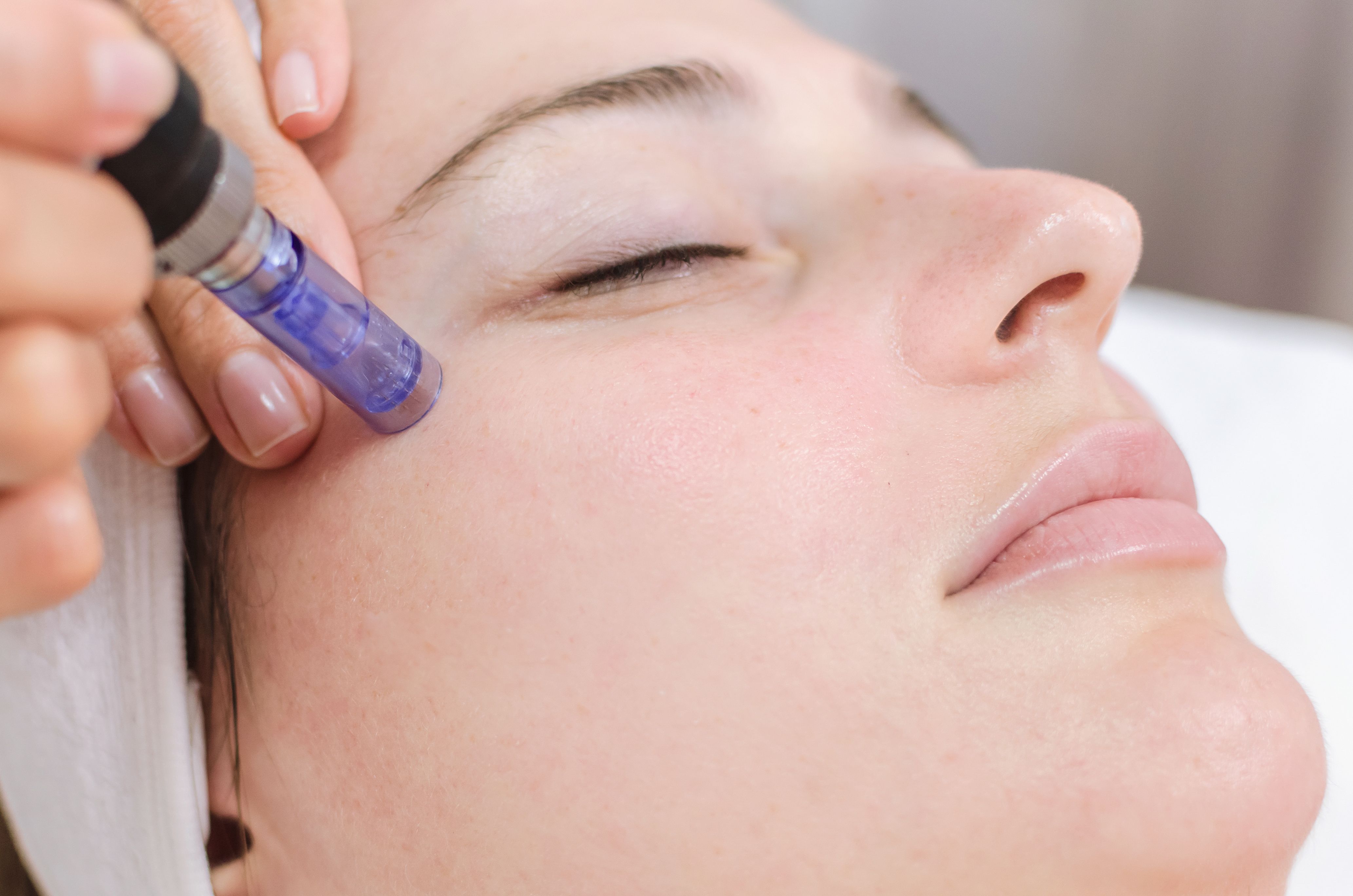- Acne
- Actinic Keratosis
- Aesthetics
- Alopecia
- Atopic Dermatitis
- Buy-and-Bill
- COVID-19
- Case-Based Roundtable
- Chronic Hand Eczema
- Chronic Spontaneous Urticaria
- Drug Watch
- Eczema
- General Dermatology
- Hidradenitis Suppurativa
- Melasma
- NP and PA
- Pediatric Dermatology
- Pigmentary Disorders
- Practice Management
- Precision Medicine and Biologics
- Prurigo Nodularis
- Psoriasis
- Psoriatic Arthritis
- Rare Disease
- Rosacea
- Skin Cancer
- Vitiligo
- Wound Care
Article
Novel treatment superficially delivers nanofat for facial rejuvenation
Author(s):
Researchers offer a way to introduce nanofat to the papillary dermis using a microneedling device with manual pumping action.
Researchers offer a way to introduce nanofat to the papillary dermis using a microneedling device with manual pumping action. (focusandblur - stock.adobe.com)

Plastic surgeons in Belgium say a novel treatment using microneedling to evenly deliver nanofat superficially into the skin rejuvenates but doesn’t volumize treated areas, according to a paper published April 2019 in Plastic and Reconstructive Surgery.
The standard method for delivering nanofat, or adipose-derived stromal vascular fraction, into the skin is with superficial injection through 27-gauge needles. But these authors offer a way to introduce nanofat to the papillary dermis using a microneedling device with manual pumping action.
Each tap of the device produces 20 microchannels in the skin, and it takes the provider an average 15 to 20 minutes to deliver the full 8 mL container. By that time, the clinician will have delivered from 72,000 to 96,000 microchannels in the skin. The provider would then repeat the process until the treatment area is covered. They recommend leaving the nanofat on the skin for 10 minutes to allow its penetration through the microchannels before cleaning it off and applying nanofat cream (made by combining 9 cc nanofat, 1 cc methylcellulose powder and 10 cc saline) to the skin’s surface after the procedure. Patients should continue to apply the cream regularly during the next three days.
Study authors report using this process around the eyes and mouth and on the neck and décolletage. One in five patients experience petechiae in the treatment area. Downtime is 24 to 48 hours, though concealer may be required. Results, including reduced rhytids and improved skin texture and color, are most evident two to three months after treatment.
In a video discussion of the paper, Plastic and Reconstructive Surgery’s coeditor and plastic surgeon James M. Stuzin, M.D., says that while many of today’s minimally invasive treatments to improve sun-damage require multiple treatments, the authors suggest one microneedling with nanofat injection treatment is often sufficient.
“It is a very interesting paper in that when they deliver nanofat into the upper layer of the dermis, you get a regenerative effect,” Dr. Stuzin says.
The authors write that while early clinical results from the combination approach are encouraging, the innovation needs longer follow-up and more research with biopsy specimens to substantiate its histologic effects.
Disclosures:
The authors report no relevant conflicts of interest.
Newsletter
Like what you’re reading? Subscribe to Dermatology Times for weekly updates on therapies, innovations, and real-world practice tips.














